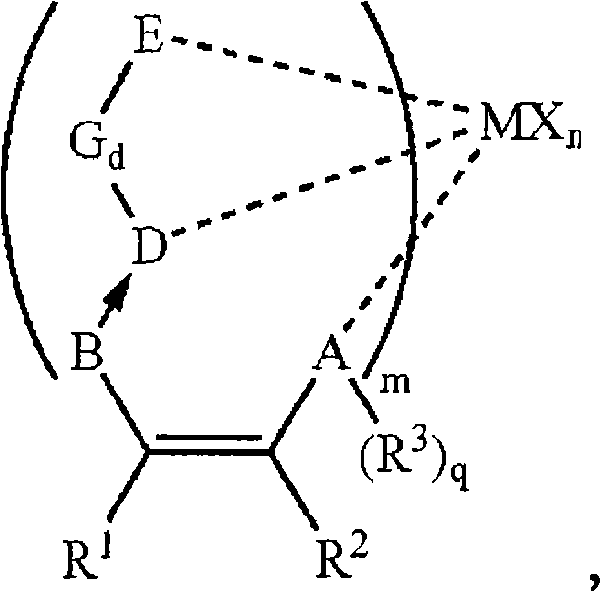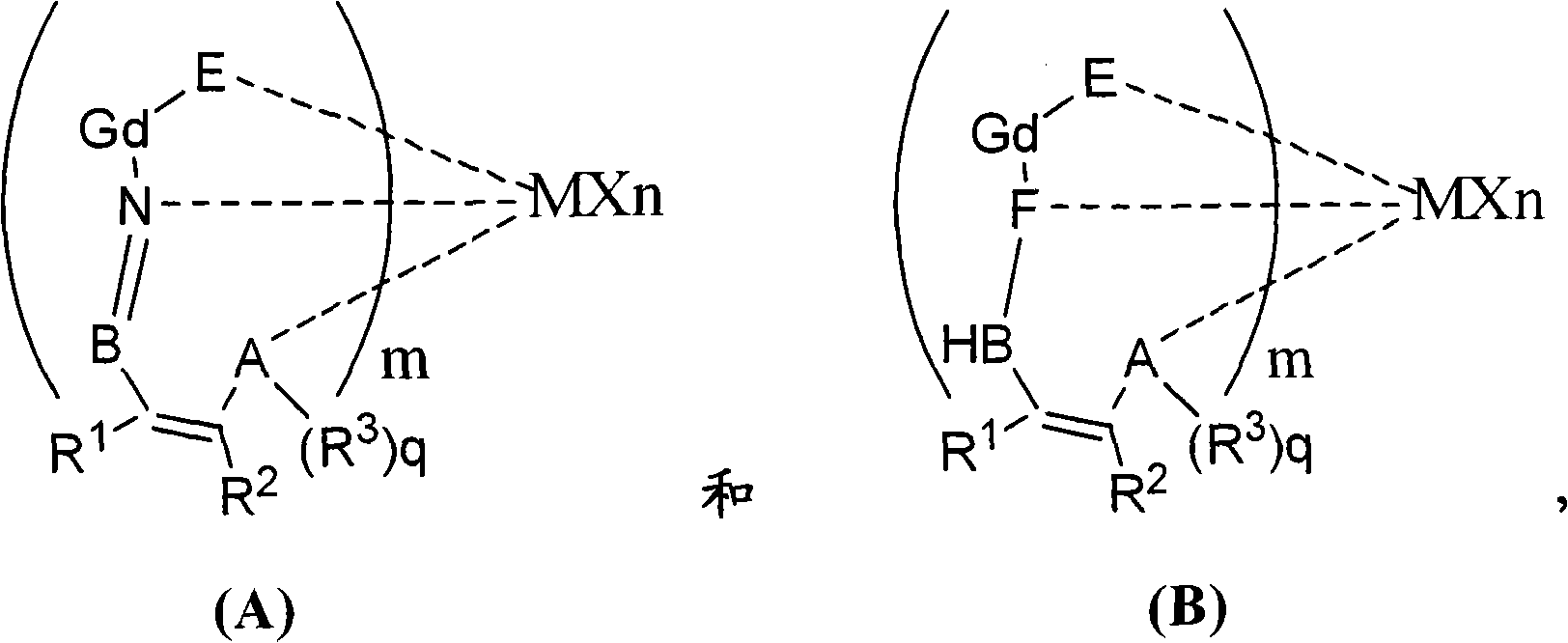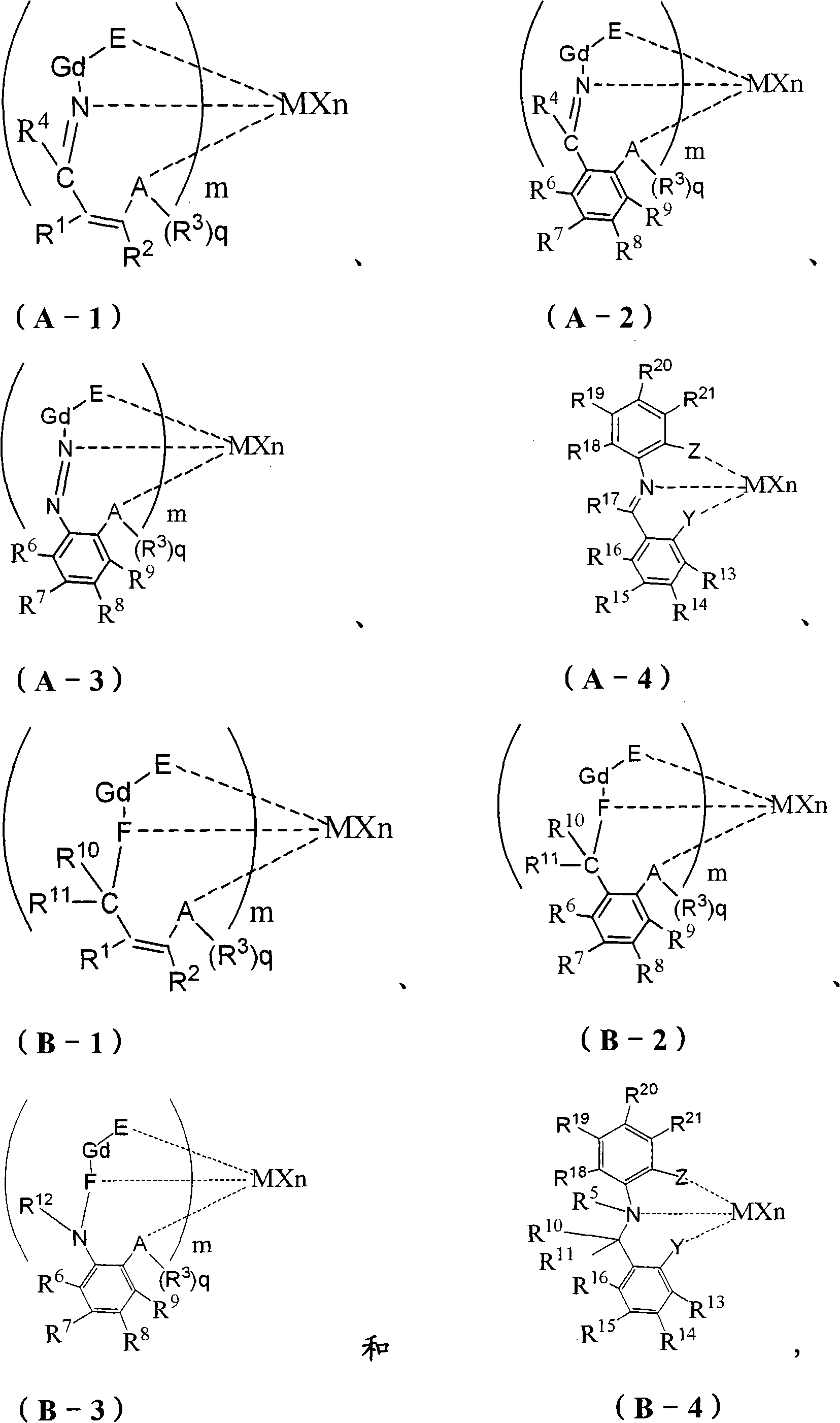Supported non-metallocene catalyst, its preparation method and uses
A non-metallocene, supported technology, applied in the direction of catalyst activation/preparation, chemical instruments and methods, physical/chemical process catalysts, etc., can solve problems such as high cost of silica gel, complicated processing technology, and quality control problems of batch products
- Summary
- Abstract
- Description
- Claims
- Application Information
AI Technical Summary
Problems solved by technology
Method used
Image
Examples
preparation example Construction
[0087] According to the present invention, it relates to a preparation method of a supported non-metallocene catalyst, comprising the following steps: dissolving a magnesium compound and a non-metallocene complex in a solvent to obtain a magnesium compound solution; adding Precipitating agent, the step of obtaining the modified carrier; and the step of treating the modified carrier with a chemical treatment agent selected from Group IV B metal compounds to obtain the supported non-metallocene catalyst.
[0088] The steps for obtaining the magnesium compound solution are specifically described below.
[0089] Specifically, the magnesium compound (solid) and the non-metallocene complex are dissolved in an appropriate solvent (ie, a solvent for dissolving the magnesium compound), thereby obtaining the magnesium compound solution.
[0090] As the solvent, for example, C 6-12 Aromatic hydrocarbons, halogenated C 6-12 Solvents such as aromatic hydrocarbons, esters and ethers. Spe...
Embodiment 1
[0294] The magnesium compound adopts anhydrous magnesium chloride, the solvent for dissolving the magnesium compound and the non-metallocene complex adopts tetrahydrofuran, and the chemical treatment agent adopts titanium tetrachloride. The non-metallocene complex adopts the structure compound of.
[0295] Weigh 5g of anhydrous magnesium chloride and non-metallocene complexes, add tetrahydrofuran solvent and dissolve completely at room temperature, stir for 2 hours, add precipitant hexane to make it precipitate, filter, wash 2 times, the amount of precipitant each time is the same as that added before The same amount was uniformly heated to 60°C and vacuum-dried to obtain a modified carrier.
[0296] Then add 60ml of hexane to the modified carrier, add titanium tetrachloride dropwise for 30 minutes under stirring conditions, stir and react at 60°C for 4 hours, filter, wash with hexane twice, and use 60ml of hexane each time, Vacuum drying at room temperature to obtain a sup...
Embodiment 1-1
[0300] Basically the same as Example 1, but with the following changes:
[0301] Non-metallocene complexes using The solvent for dissolving magnesium compounds and non-metallocene complexes was changed to toluene, the precipitation agent was changed to cyclohexane, and the chemical treatment agent was changed to zirconium tetrachloride (ZrCl 4 ).
[0302] Wherein the ratio is, the ratio of magnesium compound to toluene is 1mol: 150ml; the molar ratio of magnesium compound to non-metallocene complex is 1: 0.15; the volume ratio of precipitant to dissolved magnesium compound and non-metallocene complex is 1 : 2; the molar ratio of the magnesium compound to the chemical treatment agent is 1: 0.20.
[0303] Supported non-metallocene catalysts are designated CAT-1-1.
PUM
 Login to View More
Login to View More Abstract
Description
Claims
Application Information
 Login to View More
Login to View More - R&D
- Intellectual Property
- Life Sciences
- Materials
- Tech Scout
- Unparalleled Data Quality
- Higher Quality Content
- 60% Fewer Hallucinations
Browse by: Latest US Patents, China's latest patents, Technical Efficacy Thesaurus, Application Domain, Technology Topic, Popular Technical Reports.
© 2025 PatSnap. All rights reserved.Legal|Privacy policy|Modern Slavery Act Transparency Statement|Sitemap|About US| Contact US: help@patsnap.com



